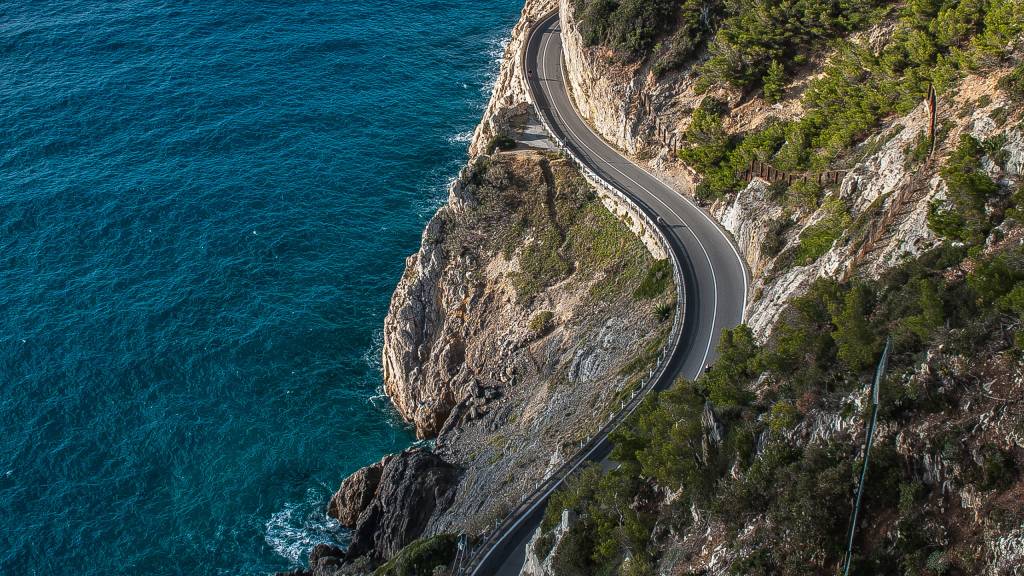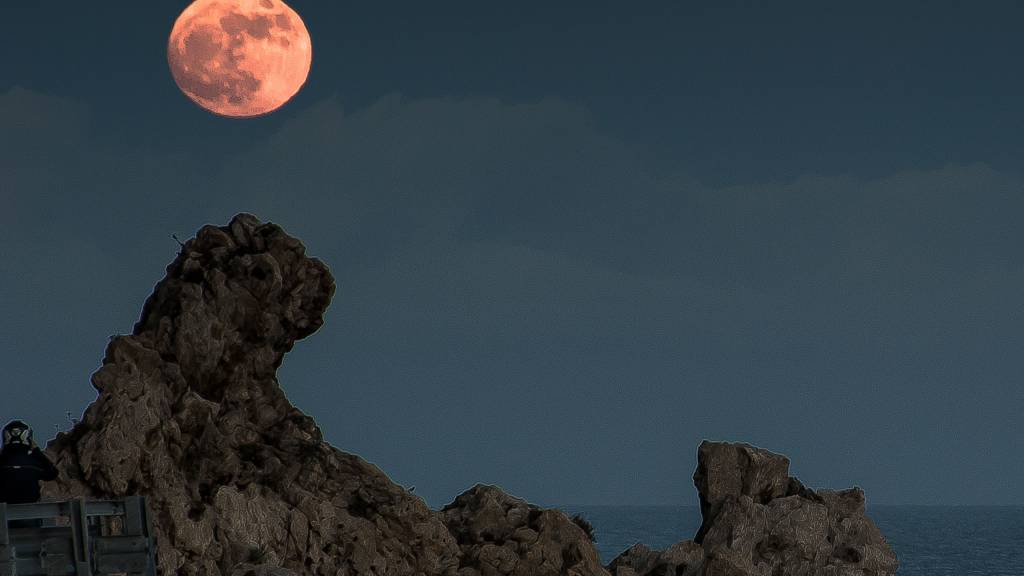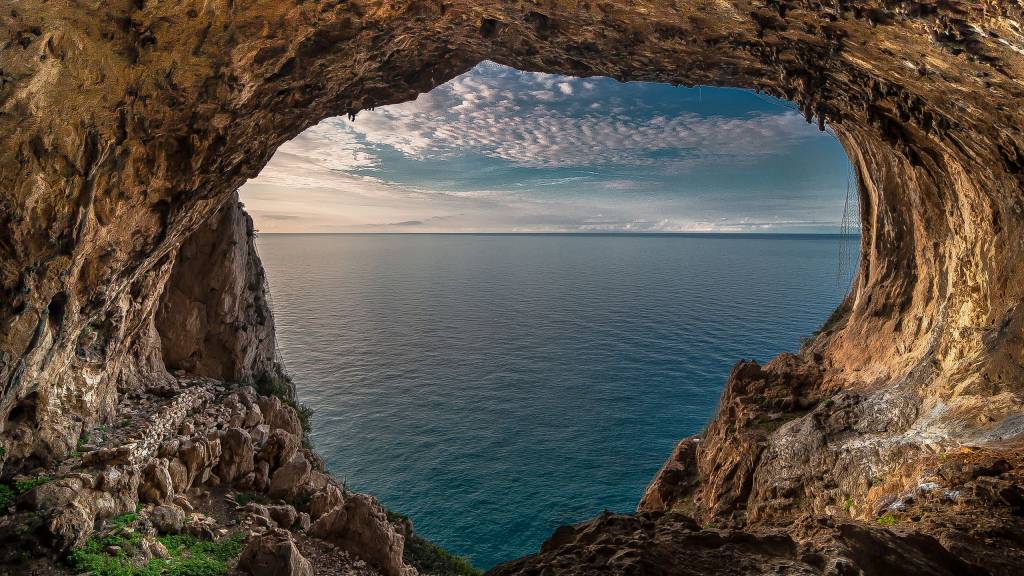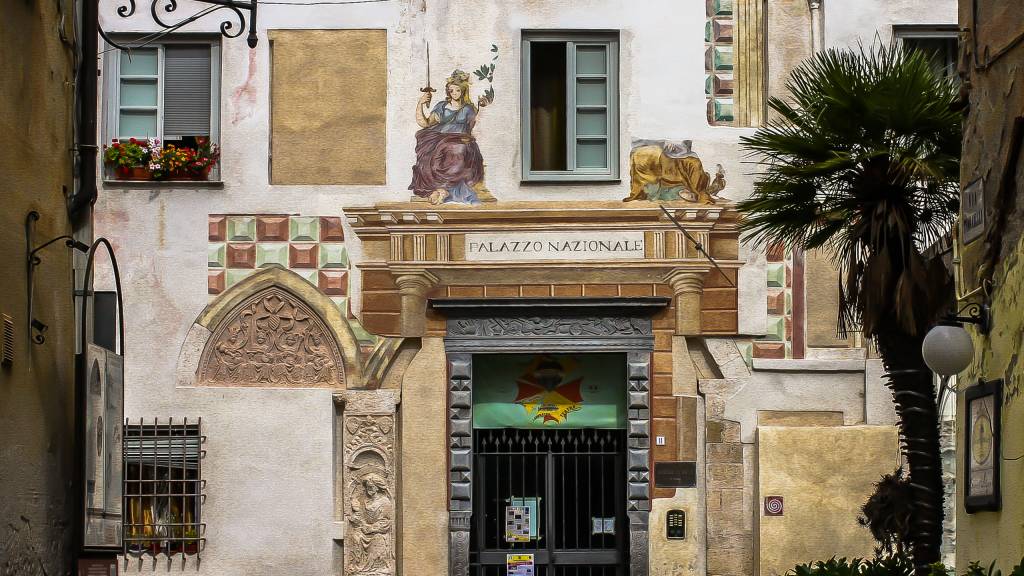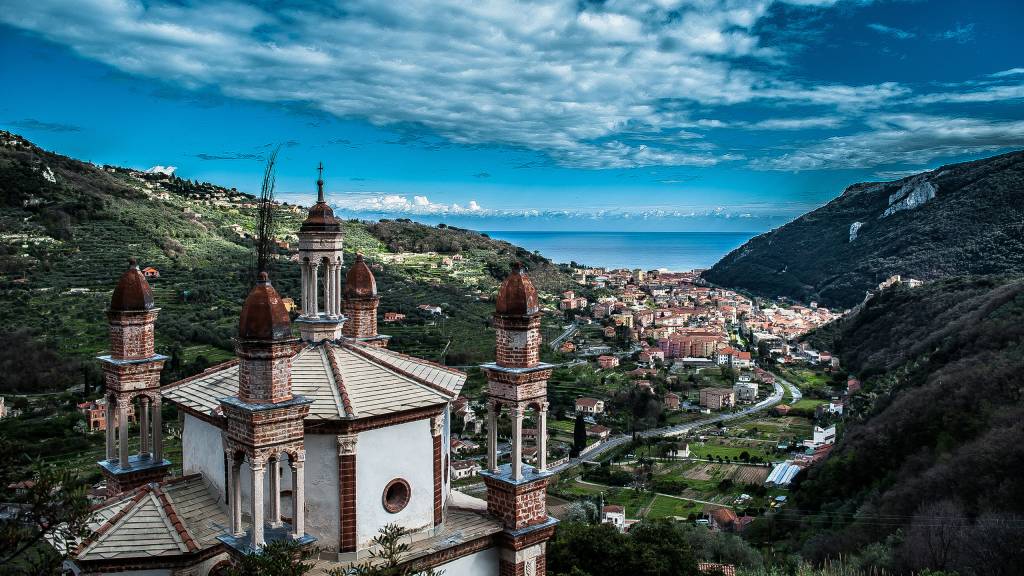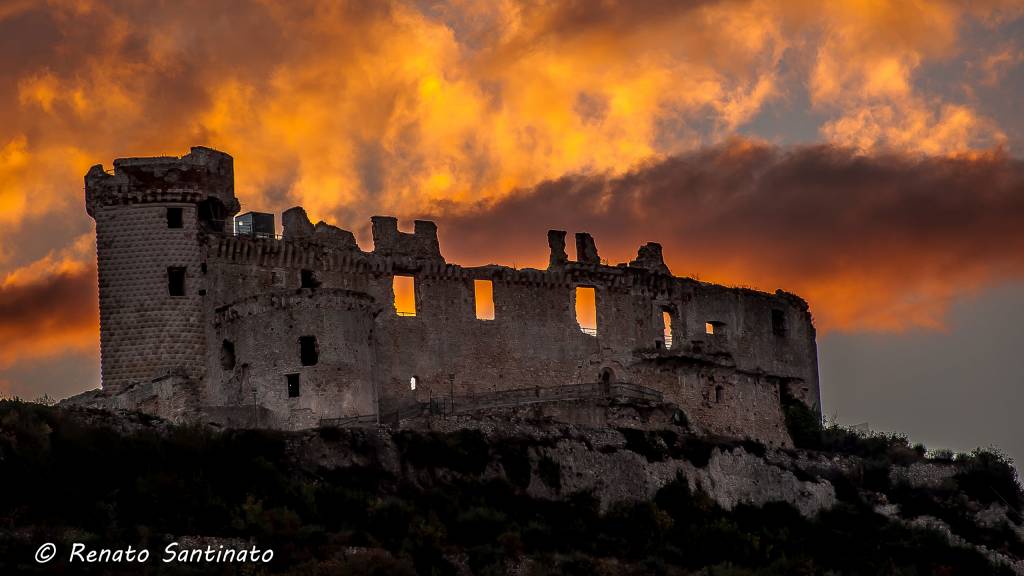DISCOVER LIGURIA CHARM
EMOTIONS AND SUGGESTIVE ATMOSPHERES
Liguria
Liguria is among the most fascinating regions of Italy. It is a narrow strip of land, bow-shaped, sheltered by a ring of mountains that give it a mild climate in every season. Its territory is characterized by an incredible variety of habitats; by artistic and architectural witnesses that are the result of its millenary history. This region ever since divided between sea, from which its old maritime civilization was born, and the peasant and piedmont hinterland, is able to offer emotions and suggestive atmospheres in every season of the year.
Its typical old villages, often encompassed by terracing with hundred-year-old olive trees, contain architectural treasures.
It is not rare to sight behind their ruins ancient castles sometimes very well conserved. Since the Roman age the Mediterranean, place of trades, cultural exchanges, migrations crossroads, became the door towards progress and civilization. The Ligurian coast watched its territory embellishing with churches, gentleman’s residences, squares, monuments, fortresses, that make it still today one the regions with the highest number of historical findings in the world. From a landscape point of view, Liguria presents a series of micro-habitats and micro-climates that make it a desired touristic destination, able to satisfy various exigencies in the area of spare time, leisure and sport. West Riviera presents a more regular trend with gulfs, large and deep coves that have allowed the growth of sandy and gravelly beaches.
East Riviera offers sometimes inaccessible coast ranges with sheer cliffs, cut off by little coves and beaches of modest dimension. Despite the presence quite continuous of mountains, coastal and submontane planes do not miss. Albenga plane is famous for some excellent products such as its artichokes. During the autumn Bardineto and Calizzano planes are rushed by mushrooms seekers, attracted by the precious fruit typical of chestnut and beech woods. On the basis of fruit and vegetable products of excellent quality and meat coming from small farming, a gastronomic offer was born in these places and it is appreciable in every season of the year.
The islands of Savona province belong to this unique and very delicate environmental variety. At a short distance from the coast, it is possible to dive and admire the very rare coral of the submarine protected area of Bergeggi Isle or the Roman findings around Gallinara Isle. Near La Spezia in Cinque Terre Park area, declared Unesco World Heritage, people can find the isles of Palmaria, Tino and Tinetto, destinations of maritime excursions by boats and diving activities as well. Some mountains, such as Mount Saccarello with its 2200 metres, soar on the opposite extreme of this region, but always near the coast in the area of Imperia. It presents an alpine flora and offers an incredible prospective on the very closed Mediterranean sea. From here Marguarais Massif expands. Into its underground people can admire one of the most known karsic formations of Italy.
Liguria is a region with a wide floristic richness. It presents some unique species in the world such as the campanula Isophylla, exclusive of Finale area; the campanula sabatia, present just in the provinces of Savona and Imperia; and the santolina ligustic, typical of La Spezia province. Walking on the various paths upon the hills above the coastline, you can appreciate the typical vegetation of this region, the macchia, formed by a series of vegetal and often aromatic species, such as rosemary, thyme, mint, bay. About fauna, woods of Liguria are inhabited above all by small animals, such as the badger, the hare, the beech marten, the squirrel;
all shy animals and therefore hardly to observe. Fallow deers and roes have been brought back for some decades.
Their rapid growth has brought the return of the wolf, from the closed Mercantour park in France. This wonderful animal is more and more populating the valleys of Ligurian hinterland. It is a discrete and not dangerous presence for the man; but its observation is really rare, and it is an unforgettable experience reserved to very few people. Birdwatching is a very practised activity as result of the augmentation of different hawks species, and the passing of some exemplars such as the short-toe eagle, above a restricted area of Apennines. Historical witnesses of all ages are numerous and very interesting beginning from the prehistorical findings in the area of Ventimiglia, Finale and Luni, to those of the Roman age with the naissance of towns such as Luna (Luni) , Genua (Genova), Vada Sabatia (Vado), Albingaunum (Albenga) and Albintimilium (Ventimilia) about in 180 b. C.
These ancient towns were connected by an efficient road net whose rests, pavements and bridges, are still visible in the hinterland of Finale Ligure in Val Ponci. Witnesses of the paleo-Christian age are a lot. Some of them are very well conserved like the Baptistery of Albenga (5th century). Every age has left over these territories an important architectural and artistic wealth. Castles’ ruins of the medieval period are rediscovered and preserved through consolidating and partial restoring works. The most important architectural heritage is that one referred to the sacral art. Paleo-Christian parishes, Baroque and Romanic churches and cathedrals, extraordinarily well-conserved, are often keepers of cultural and political influences that have done the history of this region.
People can admire influences of Lombard culture in the East and Lombard-Provençal in the West as well as influences of cultures and people still more distant such as the Byzantine one. During the 16th century the most important cities changed their aspect of medieval towns with the building of wealthy palaces and aristocratic residences. Genoa already political and administrative centre became Republic. Closed to the medieval centre, wonderful palaces and villas inhabited by the most important families of the age, were built. Genova became one of the main destinations for intellectuals, philosophers, scientists, artists that often, attracted by its beauty and mild climate, spent a long time in the Ligurian city. Ligurian artistic works were highly influenced by these European cultural contacts, as in the works of Bernardo Strozzi. Finally with the spreading of tourism from northern and central Europe, between the end of 19th century and the beginning of 20th century, people built villas and big hotels in liberty style that still today characterize the urban landscape of the most beautiful coast places.
Finale Ligure
Finale Ligure area spreads out from Caprazzoppa spit on the West and Noli cape on the East. Thanks to the various natural caves and the reliefs in the shelter of the sea this area has been inhabited by the man since the prehistorical age. Neanderthal, Cro-Magnon and later Sapiens man lived along this coast and left very important signs of their passage. A lot of finds are hold in the Civic Museum of Finale Ligure, recently re-opened after a meaningful restoration. During the Roman period this area was under Vada Sabatia and it was organized in small rural communities such as Perti, Calvisio and Varigotti. The most important centre was situated at the mouth of Pora where a Paleo-Christian Church was built towards 5th- 6th century and still worth visiting by Capuchin Friars convent.
In 643 Finalmarina and Varigotti were destroyed by Rotari and during 9th and 10th century rushed by Saracens.
To prevent plunders from the sea city walls were built around Finalborgo and Gavone Castle was put up upon the hill. In 1300 Finalborgo became the capital of marquisate of Finale but successively it capitulated to Genoa Republic that built a fortress near the sea “Castelfranco” and interred the harbour of Varigotti to secure oneself a best control on the territory. Later Carretto marquisate suffered the Spanish occupation and from 1598 to 1700 it was annexed to Spain. Today Finale Ligure is divided in four neighbourhoods Finalmarina, Finalpia, Finalborgo and Varigotti.
What to do in Finale Ligure
Finalese area represents one of the most interesting places of Liguria for quality and quantity of its monuments.
In addition to defence works such as Finalborgo city walls, Gavone Castle, San Giovanni and Castelfranco Fortresses, the ruins of a Byzantine fortress in Varigotti, the sighting towers of Caprazzoppa, San Donato and Crena spits people can admire different sacred architectures such as the Church of San Biagio (1634), and the Convent of Santa Caterina (15th century) in Finalborgo, the Paleo-Christian Parish (5th century) in Finalmarina, the Abbey of Santa Maria (15th century) in Finalpia and the medieval Church of San Lorenzo in Varigotti. The hinterland is rich of many interesting findings too. At the back of Finalpia you can find Calvisio with the Church of San Cipriano Church - a Paleo-Christian Parish- , carrying on Sciusa valley you will find “Val Ponci” so called for the five Roman Bridges that traced the route of Julia Augusta (13 b. C. ) In Aquila valley people can find the small village of Orco Feglino where the rests of a castle and the Church of San Lorenzino are still visible(1195)
Noli
The small town of Noli is situated between Vescovado spit and Noli Cape at the mouth of torrent Luminella. In 5th and 6th century became seat of a small community with a baptistery and a parish church in the area of the current Saint Paragorio.
Things to see in Noli
Saint Paragorio Cathedral is one of the best examples of Romanic art in Liguria. The city towers in red bricks conserve almost entirely their ancient face. Of the old fortified structures some gates, a part of the city walls, Mount Ursino Castle (12th century)remain still intact. The historical centre buildings date back to the medieval period. Under the portico of one of the main squares people can observe the commemorative plaque of Dante Alighieri – the supreme poet – that spent part of his exile in Noli.
Finalborgo
Finalborgo was the main town of the old estate of the noble family Del Carretto, the historical centre of Finale Ligure. Some years ago it was awarded as one of “The most beautiful Hamlets in Italy”. Also nowadays Finalborgo is surrounded by most of the old original medieval walls: along the old walls there are the four old entrance door to the village. If you enter the hamlet through “Porta Reale”, you can suddenly admire the wonderful church of San Biagio.
Things to see in Finalborgo
Following the central street you reach the main square “Piazza Garibaldi”, that is in these days the lively centre with its handicraft shops and restaurants, but in the past it was the old trading centre. Every first weekend of the month this square is the location for the typical handicraft and antiques market. Another historical important part in Finalborgo is the square “Piazza del Tribunale”, where once there was the headquarters of the governement of the noble family Del Carretto and today the same building is a public office. The nice slate gate of the building was originally one of the huge chimney of the castle Govone. From the western part of the square the street goes up along the old Beretta Route: it represented a new transport access for the old trade with the Northern part of Italy and it connected Finale Ligure to Milan. The route was opened in 1666 during the visit of the princess Margherita of Spain, who travelled to Austria to marry the Emperor. Following the route we find Castel San Giovanni, a castle built between 1640 and 1644 to stregthen the defense against external enemies. The stronghold was abandoned by the Spanish domination in 1707. After that it became a property of the republic of Genoa, that in 1713 destroyed it partially. In 1822 the castle became a jail and in the last years it has been completely renovated. If you reach the top of the Mount Becchignolo, you will find Castel Govone, the headquarters of the governement of the noble family Del Carretto. The castle stands on the highest part of the mountain and it was built in 1181 by Henry II. It was destroyed many times during the several conflicts between Finale an Genoa, but it was rebuilt at the same time of the walls around the hamlet between 1451 and 1452 by John I. In 1715 it was destroyed again by the Republic of Genoa in order to delete the symbol of their enemy, the noble family Del Carretto. Only part of the side walls and the famous Diamond Tower were spared. Many original materials of the castle have been used to built part of the churches, main gate of public buildings and mansion-houses of the area. If you come back to the square “Piazza del Tribunale” you will find the the cloister of Santa Caterina: it was built in 1359 and in 1865 it became a jail. In the last years it has been renovated and nowadays it is the location of many cultural events.


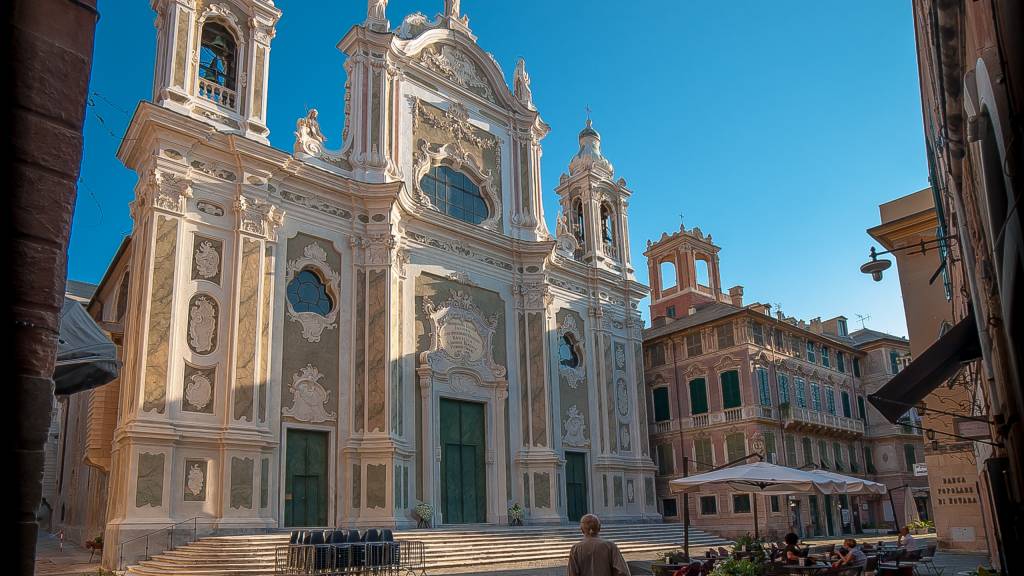

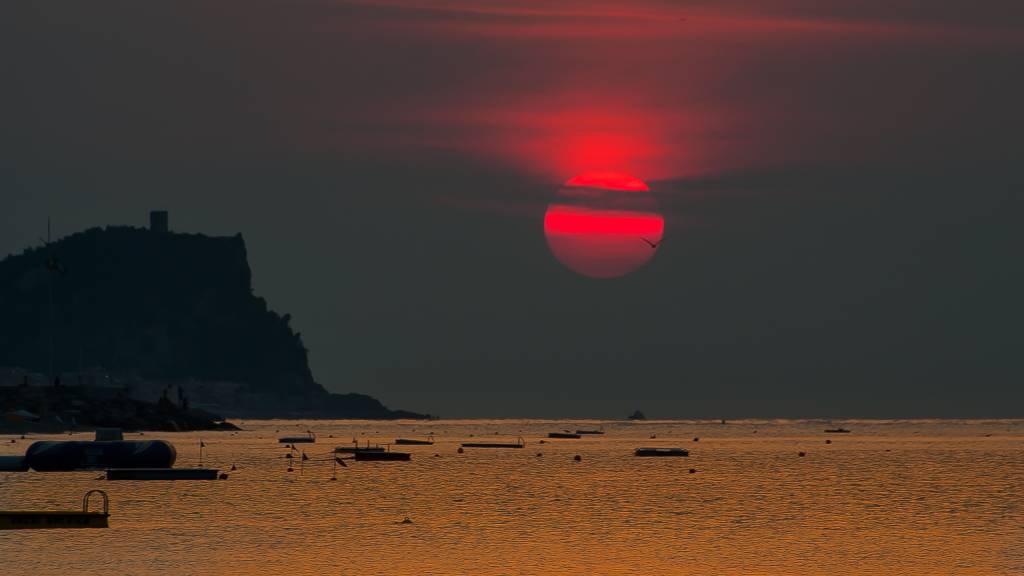
.JPG.jpg)
